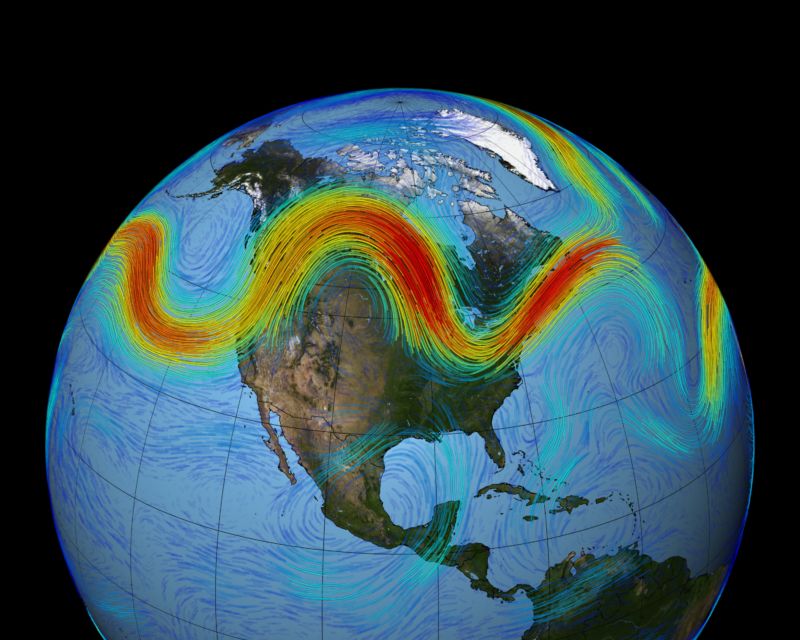
Enlarge / An example of meandering jet stream winds. (credit: NASA)
Summer 2018 saw some notably extreme weather in multiple locations around the Northern Hemisphere. There were heatwaves in the western United States, Western Europe, the Caspian region through Siberia, and Japan as well. That’s not necessarily interesting on its face, as there’s always weird weather going on somewhere. But this was not a coincidence, as all these events were physically linked by the physics of the jet stream. It's a linkage that could contribute to a crisis for food production.
The Northern Hemisphere jet stream is a band of strong winds that marks a boundary between cold Arctic air and warmer mid-latitude air. As the jet stream slides farther north or south, it brings changes in temperatures with it, via the cold and warm fronts that can bring rain.
The jet stream's path can range form a neat, east-west stripe around the planet to lazy meanders that form serpentine shapes. Large meanders tend to move slowly, setting the stage for extremes like heatwaves (or cold rain in the next meander over). These meanders are affected by the location of continents and oceans, as well as by wind patterns around mountain ranges. Because these locations are fixed, there are some common positions for jet-stream meanders that occur over and over again.
No comments:
Post a Comment